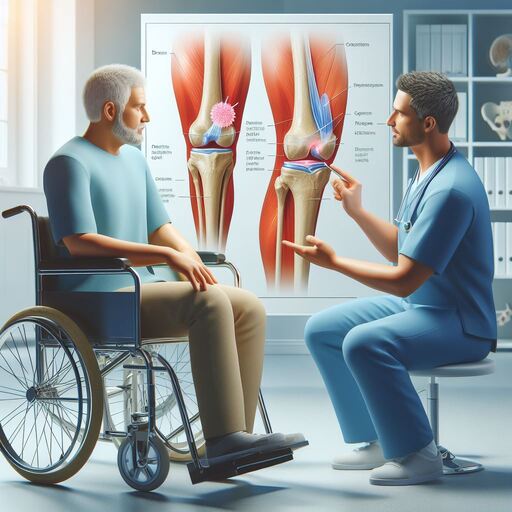Beyond the Basics of ACL Tears Advanced Treatments and Techniques for Complex Cases
Beyond the Basics of ACL Tears Advanced Treatments and Techniques for Complex Cases
An anterior cruciate ligament (ACL) tear can be a complex injury that requires advanced treatments and techniques to manage effectively. While surgery is often recommended for severe cases, other non-surgical options may also be effective depending on the severity of the injury and individual circumstances. In this article, we’ll discuss some of the advanced treatments and techniques for managing ACL tears in complex cases.
1. Minimally invasive surgery: While traditional open ACL surgery involves making a large incision and using surgical instruments to repair or replace the damaged ligament, minimally invasive surgery uses smaller incisions and specialized tools to perform the same procedure with less trauma to surrounding tissue and nerves. This approach can lead to shorter recovery times, reduced pain and swelling, and improved outcomes for patients.
2. Tissue engineering: Tissue engineering involves using stem cells or other cells to regenerate damaged tissue in the body. In the case of ACL tears, researchers are exploring the use of tissue engineering techniques to repair or replace damaged cartilage in the knee joint. While still in its early stages, this approach has shown promising results in animal models and clinical trials.
3. Robotics and technology: Advances in robotics and technology have opened up new possibilities for managing ACL tears. For example, some surgeons use robotic assist devices to guide them during surgery, resulting in more precise placement of sutures and grafts. Additionally, virtual reality simulations and telemedicine can help patients with ACL tears manage their recovery process more effectively.
4. Complementary therapies: While traditional physical therapy is still the gold standard for managing an ACL tear, complementary therapies such as acupuncture, yoga, and massage may also be helpful in reducing pain and improving joint function. These therapies can help patients manage stress and anxiety during the recovery process, which can contribute to faster healing.
5. Personalized care: Every patient with an ACL tear is unique, and their individual circumstances should be taken into account when developing a treatment plan. For example, some patients may benefit from individualized strength training programs or specialized exercises designed for their specific injury pattern. Additionally, mental health support and counseling can be tailored to the needs of each patient.
6. Long-term management: While recovery from an ACL tear is important, it’s also important to think about long-term management of the condition. Patients may benefit from ongoing physical therapy or specialized exercises designed to reduce the risk of future knee injuries or chronic knee pain. Additionally, patients may need to modify their activities and lifestyle to accommodate any long-term limitations or changes in joint function.
Beyond the Basics of ACL Tears Advanced Treatments and Techniques for Complex Cases
In conclusion, managing an ACL tear can be complex, and advanced treatments and techniques are often necessary to ensure a successful recovery. By working with a team of healthcare professionals, patients can develop a personalized treatment plan that addresses their individual needs and circumstances. Whether you’re recovering from surgery or navigating non-surgical options, it’s important to prioritize both physical and mental health during the recovery process to ensure optimal outcomes.
Beyond the Basics of ACL Tears Advanced Treatments and Techniques for Complex Cases

